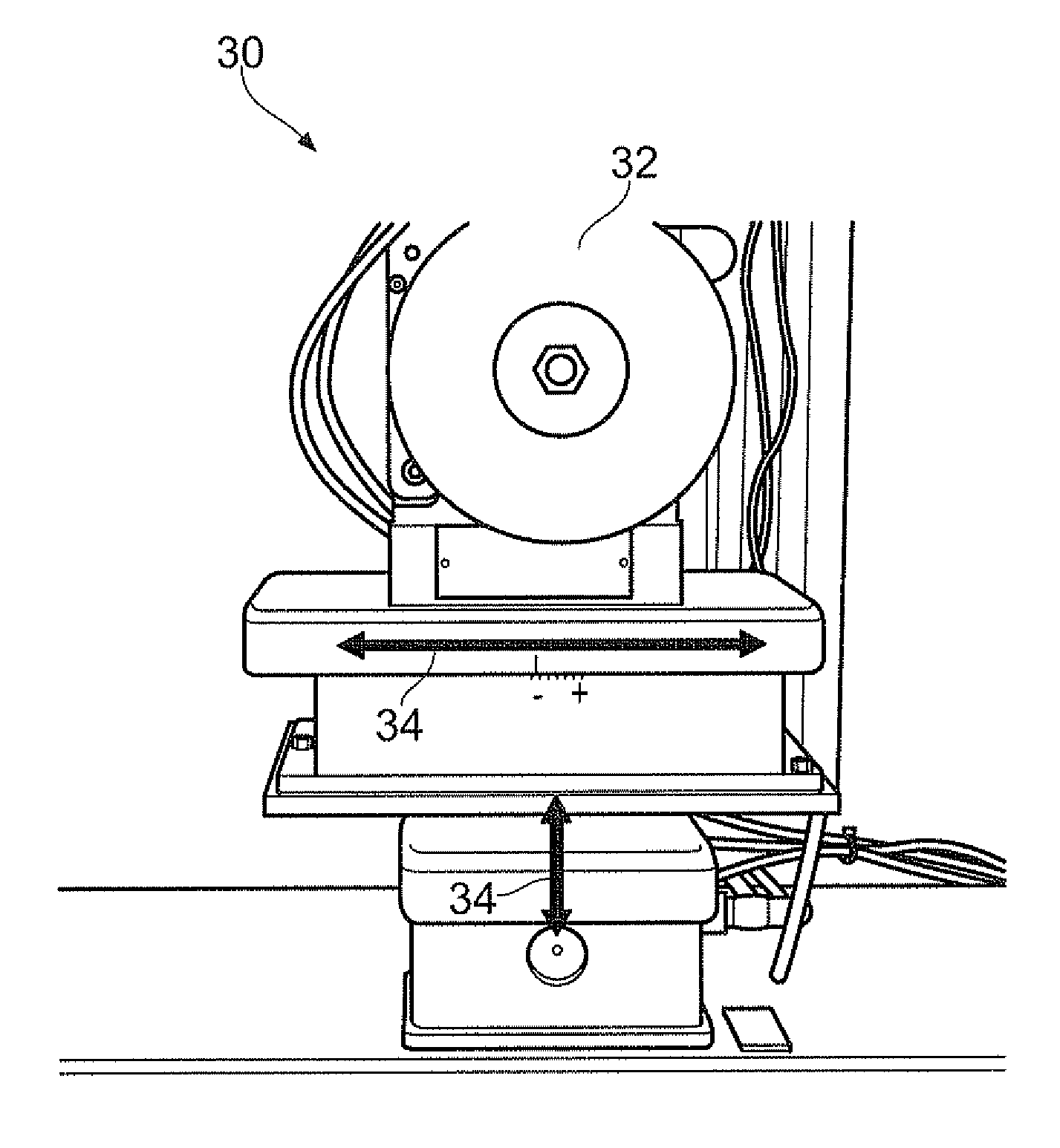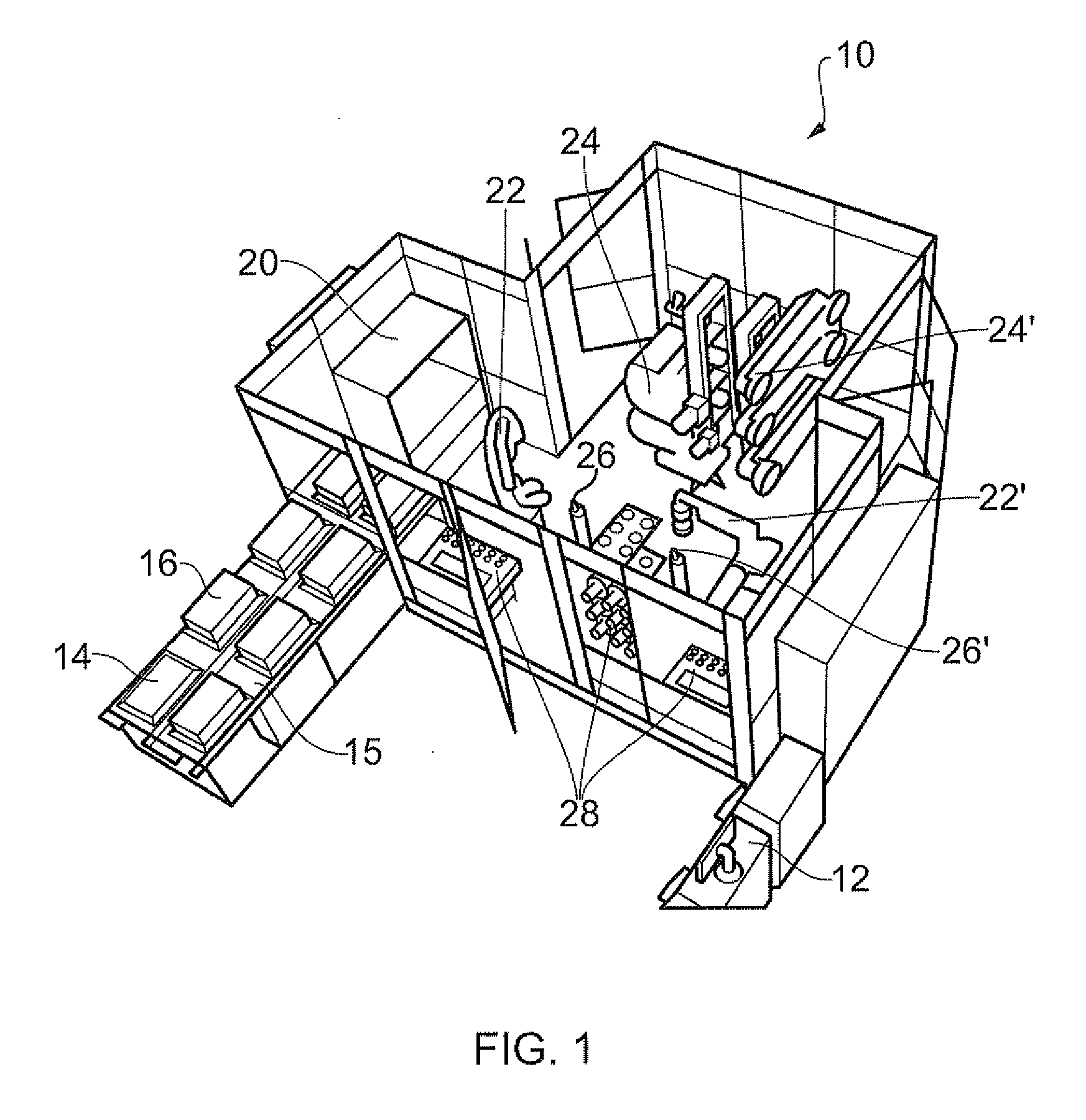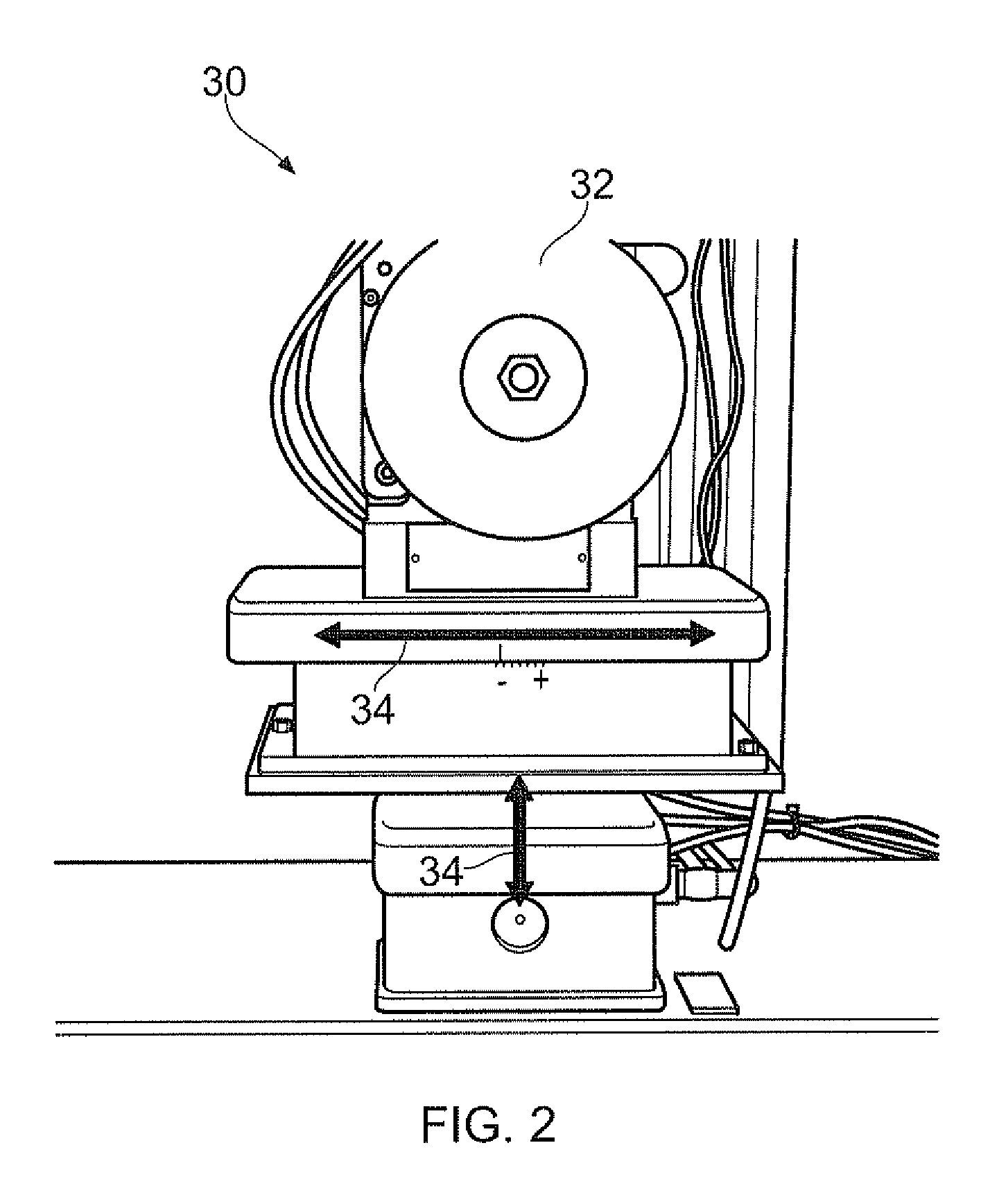Control of a machining operation
a technology of control and operation, applied in the direction of program-controlled manipulators, total factory control, programme control, etc., can solve problems such as compromising the accuracy of determination, and achieve the effect of improving the accuracy of the known position of the robotic manipulator
- Summary
- Abstract
- Description
- Claims
- Application Information
AI Technical Summary
Benefits of technology
Problems solved by technology
Method used
Image
Examples
Embodiment Construction
[0043]In FIG. 1, a machining cell is shown generally at 10. The cell 10 includes a number of machines and devices, whose purpose and operation will be explained below. These machines and devices are linked to a computer 12 which can store and process information received from the machines and devices, or their controllers, and issue instructions to them.
[0044]This cell is equipped to perform machining operations, such as grinding and polishing, on a rotor blade of a gas turbine engine. The cell can be used to perform single- or multiple-stage manufacturing operations.
[0045]Incoming blades are brought into the cell on an input conveyor 14. Part holders 16 are queued on the conveyor, the holders containing, for example, blades on which a machining operation is to be performed.
[0046]An inspection device 20, containing e.g. an optical reader, can detect the positions of the blades within the part holder 16 at the front of the queue, and can also read a component identifier, such as a ba...
PUM
 Login to View More
Login to View More Abstract
Description
Claims
Application Information
 Login to View More
Login to View More - R&D
- Intellectual Property
- Life Sciences
- Materials
- Tech Scout
- Unparalleled Data Quality
- Higher Quality Content
- 60% Fewer Hallucinations
Browse by: Latest US Patents, China's latest patents, Technical Efficacy Thesaurus, Application Domain, Technology Topic, Popular Technical Reports.
© 2025 PatSnap. All rights reserved.Legal|Privacy policy|Modern Slavery Act Transparency Statement|Sitemap|About US| Contact US: help@patsnap.com



